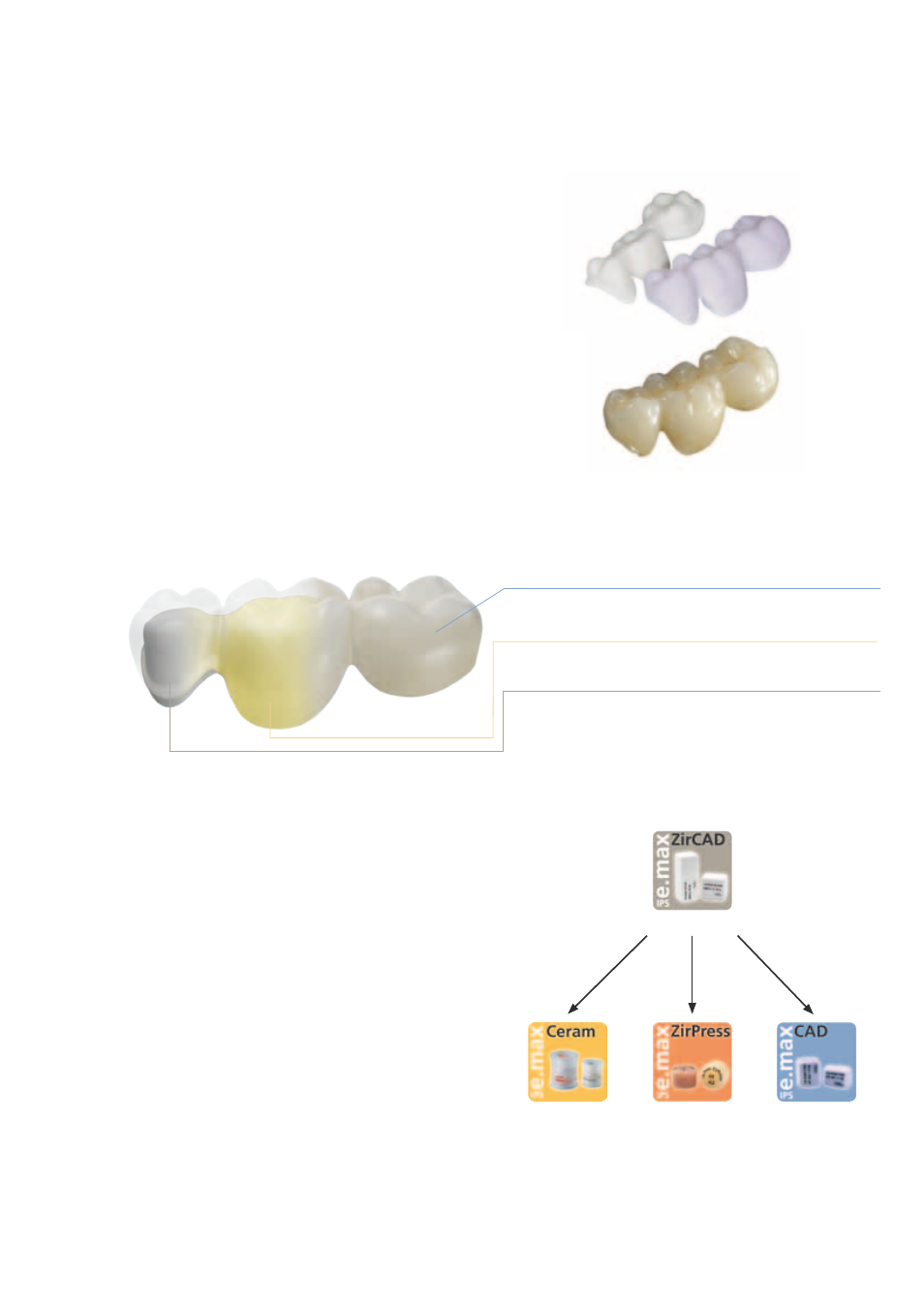E.max, Cad-on, Product information – Ivoclar Vivadent IPS e.max CAD-on User Manual
Page 4

4
e.max
®
CAD-on
Product Information
IPS
Description of the IPS e.max CAD-on
technique
The IPS e.max CAD-on technique allows the lithium disilicate glass-
ceramic (LS2) IPS e.max CAD to be used for the fabrication of high-
strength zirconium oxide-based restorations.
The CAD/CAM-based fabrication technique IPS e.max CAD-on is
characterized by the combination of the two materials: IPS e.max
CAD and IPS e.max ZirCAD (zirconium oxide). The LS2 glass-ceramic
is already being very successfully used for single-tooth restorations,
e.g. monolithic crowns, and serves as veneering structure in the
IPS e.max CAD-on technique. The zirconium oxide material IPS e.max
ZirCAD is used for the fabrication of a high-strength framework.
Both components are designed in the software and milled to high
precision in the milling unit. The IPS e.max ZirCAD framework is then
sintered in the Programat
®
S1, for instance. The homogeneous all-
ceramic fusion between the two separately milled parts is achieved
with a specially developed innovative fusion glass-ceramic during the
crystallization of the IPS e.max CAD material.
Increasing speed and efficiency
The IPS e.max CAD-on technique increases the efficiency and pro-
ductivity in the fabrication of tooth- or implant-borne posterior resto-
rations. With this technique, zirconium oxide-supported IPS e.max
CAD restorations which are unmatched in terms of strength and
esthetics can be fabricated with little manual work in one workday.
The IPS e.max CAD-on technique can be applied as an alternative to
the layering or press-on technique.
IPS e.max CAD veneering structure
IPS e.max CAD Crystall./Connect fusion glass-ceramic
IPS e.max ZirCAD framework
Zirconium oxide (ZrO
2
)
Nano-fluorapatite
glass-ceramic
Fluorapatite
glass-ceramic
Lithium disilicate (LS
2
)
Glass-ceramic
Layering technique
CAD-on technique
Pr
ess-on
technique
